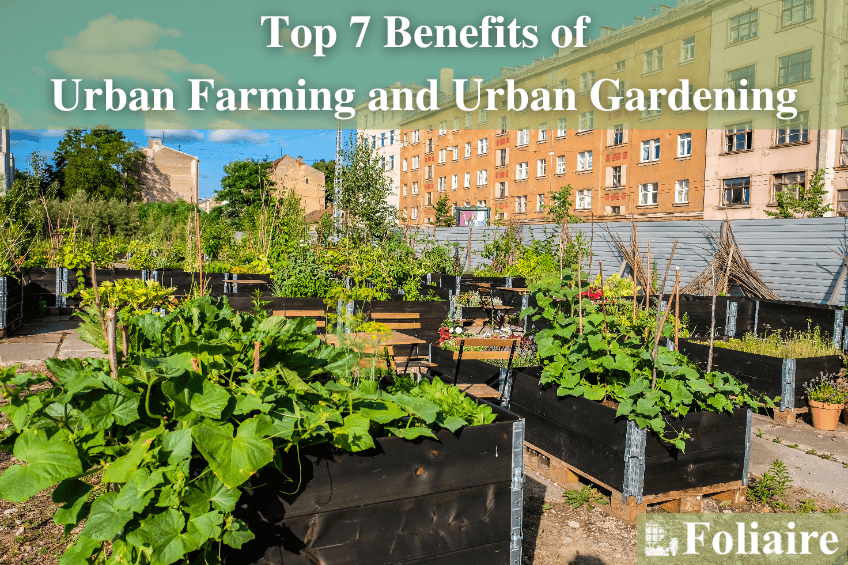The Facts About City Blooming Revealed
The Facts About City Blooming Revealed
Blog Article
The Best Guide To City Blooming
Table of ContentsUnknown Facts About City BloomingA Biased View of City BloomingHow City Blooming can Save You Time, Stress, and Money.The Buzz on City BloomingNot known Details About City Blooming

As you stroll the roads of the Bronx, Southside Chicago or East Oakland, you might see have even seen huge plots of ripening fruits and vegetables being gathered. What precisely are city farms and community gardens? Urban farming, urban farming, or metropolitan gardening is the practice of growing, handling and distributing food in or around urban locations.
Generally, metropolitan farming as a technique is a bigger investment than horticulture. There are plenty of much more hours invested into the trivial matters of farming, from the crop plan to the tending of your beds. This time around dedication takes on a whole brand-new definition once you realize the objective that is being worked towards and devoted, specifically that of gaining a plentiful return of crops to be eaten.
A neighborhood yard is a single tract gardened collectively by a group of individuals. Community gardens make use of either private or shared plots on exclusive or public land while generating fruit, vegetables, and/or plants expanded for their appealing look. The basic model right here is that a huge team of people each add a reasonably percentage of time to working their own story, and receive the fruits of their labor therefore.
Our City Blooming PDFs

, and community organizations by aiding them create and expand their own gardens. The differences in between area yard and metropolitan farm are nuanced, though in the end the exact same basic task takes placefood plant growing yet within various business frameworks - City gardening.
Urban farms are generally much more company and innovation oriented, with the main function of taking full advantage of yields and selling fruit and vegetables. Business metropolitan farms are commonly intended at broadening production on generally small acreage with technologies in technologies such as tank farming, hydroponics, and greenhouses and might companion with a commercial kitchen to create locally-produced value-added products such as jams and sauces.
4 Simple Techniques For City Blooming
The produce is usually expanded on a much smaller range and is taken home to eat at home or to share. By giving much needed green rooms in destitute, concrete city areas, they permit the benefits of yard gardening to those lacking yards, and serve as outstanding examples of self-organization and area advocacy.
Some community gardens, frequently in city locations, relocate right into growing for industrial use while some metropolitan farms open up their land for more socially aware benefits. No matter of exactly how you specify and separate the 2, they are both positive pressures for good in cities around America and the world.
As every one of Little Axe Peppers' hot sauces are sourced with peppers from area gardens, your purchases directly help money these regional projects (http://peterjackson.mee.nu/do_you_ever_have_a_dream#c2110). Take part in the transformation by.
A pal of mine just recently commented in a discussion concerning horticulture that "It's fascinating, I have actually constantly thought that farming as a technique is rather like horticulture. There are similar aspects to both do not you believe?" To the nonprofessional that remark from my good friend would certainly have gone without much thought, it seems reasonable so why not take it? But as I invested a growing number of time in my Urban Agriculture class I've pertained to understand that to state that horticulture is a small expansion of farming would be a little bit of stretch.
The Ultimate Guide To City Blooming
They both rotate around the care of plants for some goal that can be nutrition, revenue or simply sites the pleasure of the craft. Moreover they both require a monetary investment on top of a time financial investment, something that a great deal of people in our rapid paced life do not have a great deal of - sustainability.
We can see that the similarities are bountiful, but are the distinctions enough to develop a distinction? As a student at NYU I have the possibility to deal with the leave It Better Structure, a group that educates fundamental nourishment and gardening to high institution students. https://www.startus.cc/company/city-blooming. This experience gave me a thorough venture into the globe of amateur horticulture beyond what the majority of people have actually touched with
Farming as a practice is a bigger financial investment than horticulture. There are numerous more hours invested into the trivial matters of farming, from the crop strategy to the having a tendency of your beds.
The ordinary gardener goes regarding his duties as a job instead of a requirement and thus differentiates his or herself from the farmer. With this difference in hand, they are both comforting and stress-free workouts that any individual can choose up, which by itself must be an advertisement for both.
The Only Guide for City Blooming
Something failed - sustainability. Wait a minute and attempt once more Attempt once more
Report this page